Pharmacology A Patient-Centered Nursing Process Approach Kee 8th Edition Test Bank
$38.00
Name: Pharmacology A Patient-Centered Nursing Process Approach
Author: Kee Hayes McCuistion
Edition: 8th
ISBN-10: 1455751480
Type: Test Bank
- Description
- Reviews (0)
Description
You will receive this product immediate after placing the order
Pharmacology A Patient-Centered Nursing Process Approach Kee 8th Edition Test Bank
Pharmacology A Patient-Centered Nursing Process Approach Kee Hayes McCuistion 8th Edition Test Bank
***THIS IS NOT THE ACTUAL BOOK. YOU ARE BUYING the Test Bank in e-version of the following book***
Name: Pharmacology A Patient-Centered Nursing Process Approach
Author: Kee Hayes McCuistion
Edition: 8th
ISBN-10: 1455751480
Type: Test Bank
– The test bank is what most professors use an a reference when making exams for their students, which means there’s a very high chance that you will see a very similar, if not exact the exact, question in the test!
– The file is either in .doc, .padf, excel, or zipped in the package and can easily be read on PCs and Macs.
– Delivery is INSTANT. You can download the files IMMEDIATELY once payment is done.
If you have any questions, please feel free to contact us. Our response is the fastest. All questions will always be answered in 6 hours., most of the time within 30mins
We also faced similar difficulities when we were students, and we understand how you feel.
But now, with the Pharmacology A Patient-Centered Nursing Process Approach Test Bank, you will be able to
* Anticipate the type of the questions that will appear in your exam.
* Reduces the hassle and stress of your student life.
* Improve your studying and also get a better grade!
* Get prepared for examination questions.
*Can save you time and help you understand the material.
This is the quality of service we are providing and we hope to be your helper.
Delivery is in the next moment. Test Bank is accurate.
Prepare to receive your Pharmacology A Patient-Centered Nursing Process Approach Test Bank in the next moment.
If you have any questions, or would like a receive a sample chapter before your purchase, please contact us at inquiry@testbanksafe.com
Pharmacology A Patient-Centered Nursing Process Approach Test Bank
Pharmacology A Patient-Centered Nursing Process Approach Kee Hayes McCuistion 8th Edition Test Bank ISBN: 1455751480
Chapter 01: Drug Action: Pharmaceutic, Pharmacokinetic, and Pharmacodynamic Phases
Test Bank
MULTIPLE CHOICE
1. Which drugs will go through a pharmaceutic phase after it is administered?
a. Intramuscular cephalosporins
b. Intravenous vasopressors
c. Oral analgesics
d. Subcutaneous antiglycemics
ANS: C
When drugs are administered parenterally, there is no pharmaceutic phase, which occurs when a drug becomes a solution that can cross the biologic membrane.
DIF: COGNITIVE LEVEL: Understanding (Comprehension) REF: Page 3
TOP: NURSING PROCESS: Assessment
MSC: NCLEX: Physiological Integrity: Pharmacological and Parenteral Therapies
2. The nurse is preparing to administer an oral medication and wants to ensure a rapid drug action. Which form of the medication will the nurse administer?
a. Capsule
b. Enteric-coated pill
c. Liquid suspension
d. Tablet
ANS: C
Liquid drugs are already in solution, which is the form necessary for absorption in the GI tract. The other forms must disintegrate into small particles and then dissolve before being absorbed.
DIF: COGNITIVE LEVEL: Understanding (Comprehension) REF: Page 3
TOP: NURSING PROCESS: Nursing Intervention
MSC: NCLEX: Physiological Integrity: Pharmacological and Parenteral Therapies
3. The nurse is teaching a patient who will be discharged home with a prescription for an enteric-coated tablet. Which statement by the patient indicates understanding of the teaching?
a. “I may crush the tablet and put it in applesauce to improve absorption.”
b. “I should consume acidic foods to enhance absorption of this medication.”
c. “I should expect a delay in onset of the drug’s effects after taking the tablet.”
d. “I should take this medication with high-fat foods to improve its action.”
ANS: C
Enteric-coated tablets resist disintegration in the acidic environment of the stomach and disintegrate when they reach the small intestine. There is usually some delay in onset of actions after taking these medications. Enteric-coated tablets should not be crushed or chewed, which would alter the time and location of absorption. Acidic foods will not enhance the absorption of the medication. The patient should not to eat high-fat food before ingesting an enteric-coated tablet, because high-fat foods decrease the absorption rate.
DIF: COGNITIVE LEVEL: Applying (Application) REF: Page 3
TOP: NURSING PROCESS: Nursing Intervention
MSC: NCLEX: Physiological Integrity: Pharmacological and Parenteral Therapies
4. A patient who is newly diagnosed with type 1 diabetes mellitus asks why insulin must be given by subcutaneous injection instead of by mouth. The nurse will explain that this is because
a. absorption is diminished by the first-pass effects in the liver.
b. absorption is faster when insulin is given subcutaneously.
c. digestive enzymes in the gastrointestinal tract prevent absorption.
d. the oral form is less predictable with more adverse effects.
ANS: C
Insulin, growth hormones, and other protein-based drugs are destroyed in the small intestine by digestive enzymes and must be given parenterally. Because insulin is destroyed by digestive enzymes, it would not make it to the liver for metabolism with a first-pass effect. Subcutaneous tissue has fewer blood vessels, so absorption is slower in such tissue. Insulin is given subcutaneously because it is desirable to have it absorb slowly.
DIF: COGNITIVE LEVEL: Understanding (Comprehension) REF: Page 3
TOP: NURSING PROCESS: Nursing Intervention: Patient Teaching
MSC: NCLEX: Physiological Integrity: Pharmacological and Parenteral Therapies
5. The nurse is preparing to administer an oral medication that is water-soluble. The nurse understands that this drug
a. must be taken on an empty stomach.
b. requires active transport for absorption.
c. should be taken with fatty foods.
d. will readily diffuse into the gastrointestinal tract.
ANS: B
Water-soluble drugs require a carrier enzyme or protein to pass through the GI membrane.
DIF: COGNITIVE LEVEL: Understanding (Comprehension) REF: Page 4
TOP: NURSING PROCESS: Nursing Intervention
MSC: NCLEX: Physiological Integrity: Pharmacological and Parenteral Therapies
6. A nurse is preparing to administer an oral drug that is best absorbed in an acidic environment. How will the nurse give the drug?
a. On an empty stomach
b. With a full glass of water
c. With food
d. With high-fat food
ANS: C
Food can stimulate the production of gastric acid so medications requiring an acidic environment should be given with a meal. High-fat foods are useful for drugs that are lipid soluble.
DIF: COGNITIVE LEVEL: Applying (Application) REF: Page 4
TOP: NURSING PROCESS: Nursing Intervention
MSC: NCLEX: Physiological Integrity: Pharmacological and Parenteral Therapies
7. The nurse is preparing an injectable drug and wants to administer it for rapid absorption. How will the nurse give this medication?
a. IM into the deltoid muscle
b. IM into the gluteal muscle
c. SubQ into abdominal tissue
d. SubQ into the upper arm
ANS: A
Drugs given IM are absorbed faster in muscles that have more blood vessels, such as the deltoid, rather than those with fewer blood vessels, such as the gluteals. Subcutaneous routes are used when absorption needs to be slower and more sustained.
DIF: COGNITIVE LEVEL: Applying (Application) REF: Page 4
TOP: NURSING PROCESS: Planning
MSC: NCLEX: Physiological Integrity: Pharmacological and Parenteral Therapies
8. The nurse is reviewing medication information with a nursing student prior to administering an oral drug and notes that the drug has extensive first-pass effects. Which statement by the student indicates a need for further teaching about this medication?
a. “The first-pass effect means the drug may be absorbed into systemic circulation from the intestinal lumen.”
b. “The first-pass effect means the drug may be changed to an inactive form and excreted.”
c. “The first-pass effect means the drug may be changed to a metabolite, which may be more active than the original.”
d. “The first-pass effect means the drug may be unchanged as it passes through the liver.”
ANS: A
Drugs that undergo first-pass metabolism are absorbed into the portal vein from the intestinal lumen and go through the liver where they are either unchanged or are metabolized to an inactive or a more active form.
DIF: COGNITIVE LEVEL: Understanding (Comprehension) REF: Page 4
TOP: NURSING PROCESS: Nursing Intervention
MSC: NCLEX: Physiological Integrity: Pharmacological and Parenteral Therapies
9. The nurse prepares to change a patient’s medication from an intravenous to an oral form and notes that the oral form is ordered in a higher dose. The nurse understands that this is due to differences in
a. bioavailability.
b. pinocytosis.
c. protein binding.
d. tachyphylaxis.
ANS: A
Oral drugs may have less bioavailability because a lower percentage of the drug reaches the systemic circulation. Pinocytosis refers to the process by which cells carry a solute across a membrane. Protein binding can occur with both routes. Tachyphylaxis describes a rapid decrease in response to drugs that occurs when tolerance develops quickly.
DIF: COGNITIVE LEVEL: Understanding (Comprehension) REF: Page 4
TOP: NURSING PROCESS: Assessment
MSC: NCLEX: Physiological Integrity: Pharmacological and Parenteral Therapies
10. The nurse is preparing to administer a drug and learns that it binds to protein at a rate of 90%. The patient’s serum albumin level is low. The nurse will observe the patient for
a. decreased drug absorption.
b. decreased drug interactions.
c. decreased drug toxicity.
d. increased drug effects.
ANS: D
Drugs that are highly protein-bound bind with albumin and other proteins, leaving less free drug in circulation. If a patient has a low albumin, the drug is not bound, and there is more free drug to cause drug effects. There would be increased absorption, increased interactions with other drugs, and increased toxicity.
DIF: COGNITIVE LEVEL: Applying (Application) REF: Page 5
TOP: NURSING PROCESS: Evaluation
MSC: NCLEX: Physiological Integrity: Pharmacological and Parenteral Therapies
11. The nurse is administering two drugs to a patient and learns that both drugs are highly protein-bound. The nurse may expect
a. decreased bioavailability of both drugs.
b. decreased drug effects.
c. decreased drug interactions.
d. increased risk of adverse effects.
ANS: D
Two drugs that are highly protein-bound will compete for protein-binding sites, leaving more free drug in circulation and an increased risk of adverse effects as well as increased bioavailability, increased drug effects, and increased drug interactions.
DIF: COGNITIVE LEVEL: Applying (Application) REF: Page 5
TOP: NURSING PROCESS: Evaluation
MSC: NCLEX: Physiological Integrity: Pharmacological and Parenteral Therapies
12. A patient has been taking a drug that has a protein-binding effect of 75%. The provider adds a new medication that has a protein-binding effect of 90%. The nurse will expect
a. decreased drug effects of the first drug.
b. decreased therapeutic range of the first drug.
c. increased drug effects of the first drug.
d. increased therapeutic range of the first drug.
ANS: C
Adding another highly protein-bound drug will displace the first drug from protein-binding sites and release more free drug increasing the drug’s effects. This does not alter the therapeutic range, which is the serum level between drug effectiveness and toxicity.
DIF: COGNITIVE LEVEL: Applying (Application) REF: Page 5
TOP: NURSING PROCESS: Nursing Intervention/Evaluation
MSC: NCLEX: Physiological Integrity: Pharmacological and Parenteral Therapies
13. The nurse gives a medication to a patient with a history of liver disease. The nurse will monitor this patient for
a. decreased drug effects.
b. increased drug effects.
c. decreased therapeutic range.
d. increased therapeutic range.
ANS: B
Liver diseases such as cirrhosis and hepatitis alter drug metabolism by inhibiting the drug-metabolizing enzymes in the liver. When the drug metabolism rate is decreased, excess drug accumulation can occur and lead to toxicity.
DIF: COGNITIVE LEVEL: Applying (Application) REF: Page 6
TOP: NURSING PROCESS: Assessment/Nursing Intervention
MSC: NCLEX: Physiological Integrity: Pharmacological and Parenteral Therapies
14. The nurse gives 800 mg of a drug that has a half-life of 8 hours. How much drug will be left in the body in 24 hours if no additional drug is given?
a. None
b. 50 mg
c. 100 mg
d. 200 mg
ANS: C
Eight hours after the drug is given, there will be 400 mg left. Eight hours after that (16 hours), there will be 200 mg left. At 24 hours, there will be 100 mg left.
DIF: COGNITIVE LEVEL: Applying (Application) REF: Page 6
TOP: NURSING PROCESS: Evaluation
MSC: NCLEX: Physiological Integrity: Pharmacological and Parenteral Therapies
15. If a drug has a half-life of 12 hours and is given twice daily starting at 0800 on a Monday, when will a steady state be achieved?
a. 0800 on Tuesday
b. 0800 on Wednesday
c. 0800 on Thursday
d. 0800 on Friday
ANS: B
Steady-state levels occur at 3 to 5 half-lives. Wednesday at 0800 is 4 half-lives from the original dose.
DIF: COGNITIVE LEVEL: Applying (Application) REF: Pages 6-7
TOP: NURSING PROCESS: Evaluation
MSC: NCLEX: Physiological Integrity: Pharmacological and Parenteral Therapies
16. The nurse is preparing to administer a drug that is ordered to be given twice daily. The nurse reviews the medication information and learns that the drug has a half-life of 24 hours. What will the nurse do next?
a. Administer the medication as ordered.
b. Contact the provider to discuss daily dosing.
c. Discuss every-other-day dosing with the provider.
d. Hold the medication and notify the provider.
ANS: B
A drug with a longer half-life should be given at longer intervals to avoid drug toxicity.
DIF: COGNITIVE LEVEL: Applying (Application) REF: Page 12
TOP: NURSING PROCESS: Planning
MSC: NCLEX: Physiological Integrity: Pharmacological and Parenteral Therapies
17. The nurse is caring for a patient who has taken an overdose of aspirin several hours prior. The provider orders sodium bicarbonate to be given. The nurse understands that this drug is given for which purpose?
a. To counter the toxic effects of the aspirin
b. To decrease the half-life of the aspirin
c. To increase the excretion of the aspirin
d. To neutralize the acid of the aspirin
ANS: C
Aspirin is a weak acid and is more readily excreted in alkaline urine. Sodium bicarbonate alkalizes the urine. It does not act as an antidote to aspirin, decrease the half-life, or neutralize its pH.
DIF: COGNITIVE LEVEL: Applying (Application) REF: Page 7
TOP: NURSING PROCESS: Planning
MSC: NCLEX: Physiological Integrity: Pharmacological and Parenteral Therapies
18. The nurse is preparing to administer a drug that is eliminated through the kidneys. The nurse reviews the patient’s chart and notes that the patient has increased serum creatinine and blood urea nitrogen (BUN). The nurse will perform which action?
a. Administer the drug as ordered.
b. Anticipate a shorter than usual half-life of the drug.
c. Expect decreased drug effects when the drug is given.
d. Notify the provider and discuss giving a lower dose.
ANS: D
Increased creatinine and BUN indicate decreased renal function so a drug that is eliminated through the kidneys can become toxic. The nurse should discuss a lower dose with the provider. The drug will have a longer half-life and will exhibit increased effects with decreased renal function.
DIF: COGNITIVE LEVEL: Applying (Application) REF: Page 7
TOP: NURSING PROCESS: Nursing Intervention
MSC: NCLEX: Physiological Integrity: Pharmacological and Parenteral Therapies
19. The nurse understands that the length of time needed for a drug to reach the minimum effective concentration (MEC) is the
a. duration of action.
b. onset of action.
c. peak action time.
d. time response curve.
ANS: B
The onset of action is the time it takes to reach the MEC. Duration of action is the length of time a drug has a pharmacologic effect. Peak action time occurs when the drug reaches its highest blood level. The time response curve is an evaluation of the other three measures.
DIF: COGNITIVE LEVEL: Remembering (Knowledge) REF: Page 7
TOP: NURSING PROCESS: N/A
MSC: NCLEX: Physiological Integrity: Pharmacological and Parenteral Therapies
20. The nurse administers albuterol to a patient who has asthma. The albuterol acts by stimulating beta2-adrenergic receptors to cause bronchodilation. The nurse understands that albuterol is a beta-adrenergic
a. agonist.
b. antagonist.
c. inhibitor.
d. depressant.
ANS: A
An agonist medication is one that stimulates a certain type of cell to produce a response.
DIF: COGNITIVE LEVEL: Understanding (Comprehension) REF: Page 8
TOP: NURSING PROCESS: N/A
MSC: NCLEX: Physiological Integrity: Pharmacological and Parenteral Therapies
21. The nurse is explaining to the patient why a nonspecific drug has so many side effects. Which statement by the patient indicates a need for further teaching?
a. “Nonspecific drugs can affect specific receptor types in different body tissues.”
b. “Nonspecific drugs can affect a variety of receptor types in similar body tissues.”
c. “Nonspecific drugs can affect hormone secretion as well as cellular functions.”
d. “Nonspecific drugs require higher doses than specific drugs to be effective.”
ANS: D
Nonspecific drugs can act on one type of receptor but in different body tissues, or a variety of receptor types, or act on hormones to produce effects. Nonspecific drugs do not require higher doses.
DIF: COGNITIVE LEVEL: Applying (Application) REF: Page 8
TOP: NURSING PROCESS: Nursing Intervention: Patient Teaching
MSC: NCLEX: Physiological Integrity: Pharmacological and Parenteral Therapies
22. The nurse is preparing to give a dose of gentamicin to a patient and notes that the most recent serum gentamicin trough level was 2 mcg/mL. What will the nurse do next?
a. Administer the drug as ordered.
b. Administer the drug and monitor for adverse effects.
c. Notify the provider to discuss decreasing the dose.
d. Notify the provider to report a toxic drug level.
ANS: D
The trough drug level for gentamicin should be less than 2 mcg/mL. The nurse should not administer the drug and should notify the provider of the toxic level.
DIF: COGNITIVE LEVEL: Applying (Application) REF: Page 10
TOP: NURSING PROCESS: Evaluation
MSC: NCLEX: Physiological Integrity: Pharmacological and Parenteral Therapies
23. The nurse is preparing to administer the first dose of digoxin (Lanoxin) to a patient and notes that the dose ordered is much higher than the usual recommended dose. Which action will the nurse perform?
a. Administer the dose as ordered.
b. Give the dose and monitor for toxicity.
c. Hold the dose until reviewing it with the provider.
d. Refuse to give the dose.
ANS: A
Digoxin requires a loading dose when first prescribed.
DIF: COGNITIVE LEVEL: Applying (Application) REF: Page 10
TOP: NURSING PROCESS: Nursing Intervention
MSC: NCLEX: Physiological Integrity: Pharmacological and Parenteral Therapies
24. The nurse administers a narcotic analgesic to a patient who has been receiving it for 1 day after orthopedic surgery. The patient reports no change in pain 30 minutes after the medication is given. The nurse recognizes that this patient is exhibiting
a. drug-seeking behavior.
b. drug tolerance.
c. the placebo effect.
d. tachyphylaxis.
ANS: D
Tachyphylaxis is a rapid decrease in response, or acute tolerance. Tolerance to drug effects can occur with narcotics, requiring increased doses in order to achieve adequate drug effects. Nurses often mistake drug-seeking behavior for drug tolerance. The placebo effect occurs when the patient experiences a response with an inactive drug.
DIF: COGNITIVE LEVEL: Understanding (Comprehension) REF: Page 11
TOP: NURSING PROCESS: Assessment
MSC: NCLEX: Physiological Integrity: Pharmacological and Parenteral Therapies
Be the first to review “Pharmacology A Patient-Centered Nursing Process Approach Kee 8th Edition Test Bank”
You must be logged in to post a review.

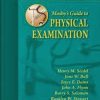
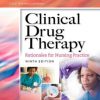
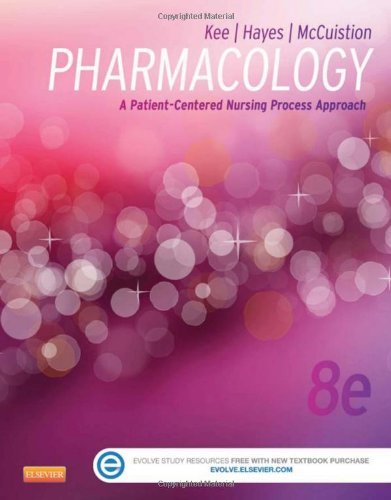
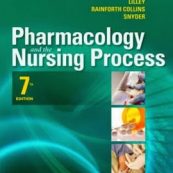
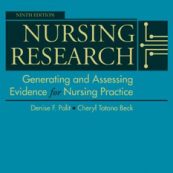
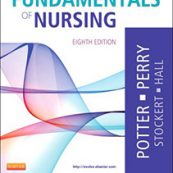
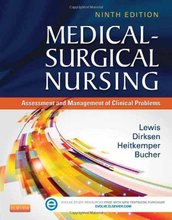
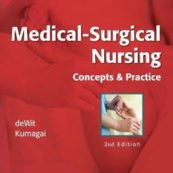
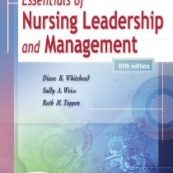
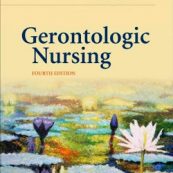
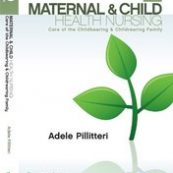
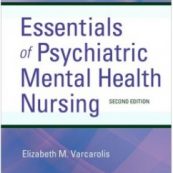
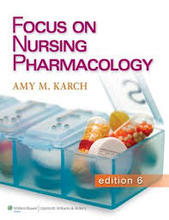
Reviews
There are no reviews yet.